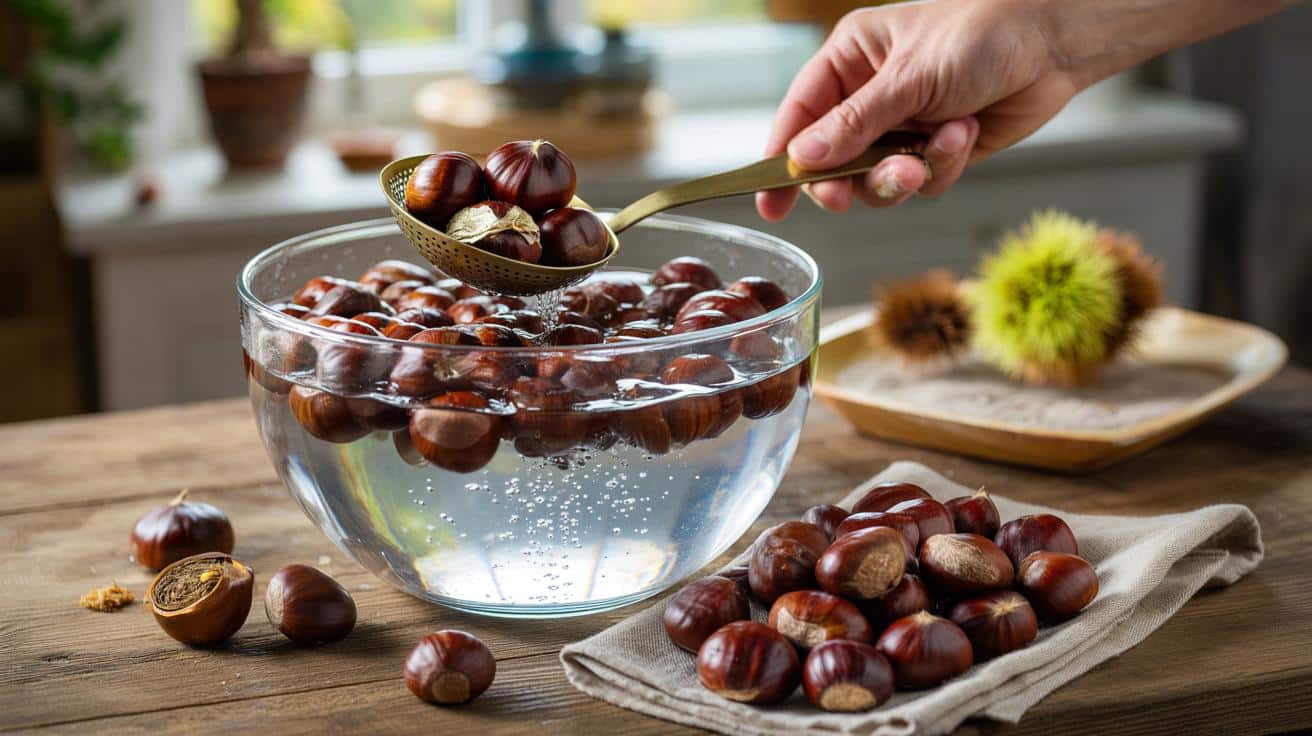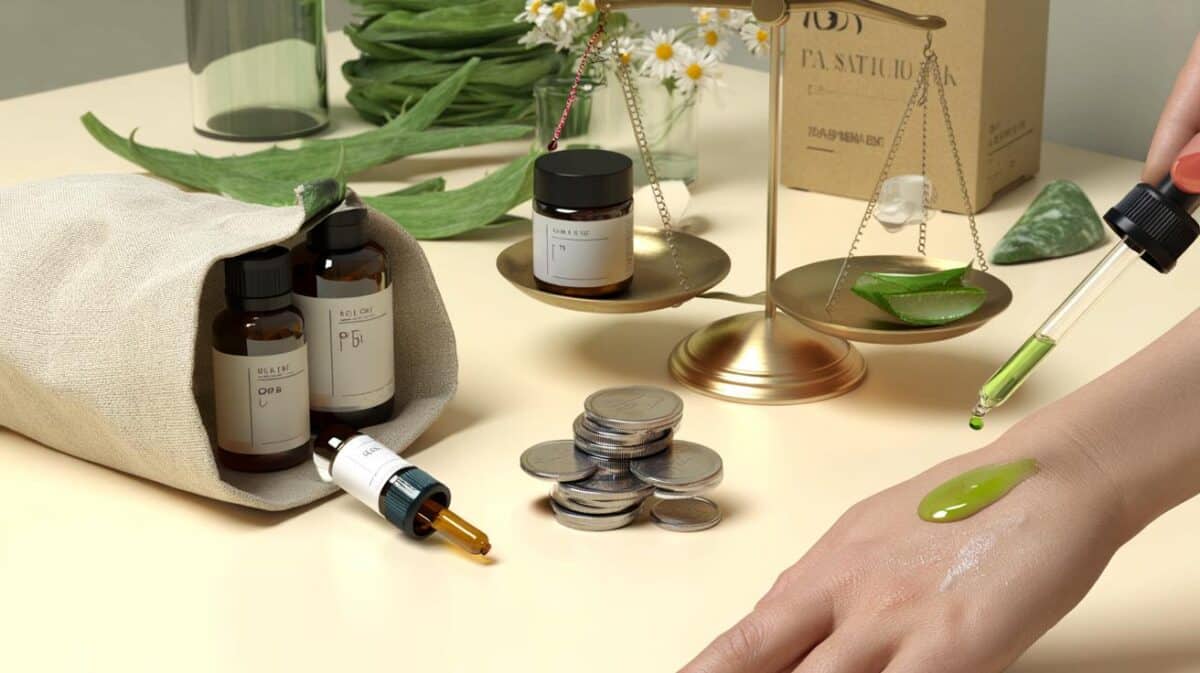There is a quiet, old-school trick to stop that.
Foragers and shoppers across Britain face the same seasonal frustration. Chestnuts look glorious on day one, then wrinkle or bloom with mould by day five. A simple, time-proven habit from rural kitchens can change the odds in your favour and keep that nutty sweetness intact well into winter.
Why chestnuts spoil without warning
Chestnuts are not like almonds or hazelnuts. They are starchy, moist and alive, so they breathe and lose water. Warm rooms speed that loss. Dry air shrivels the kernel and hardens the texture.
Moist corners create a different problem. Condensation lingers on shells and fungi flourish. The result is a speckled bloom, a musty odour and a bitter off-taste. One bad nut can seed a chain reaction through a whole bag.
Pests add to the damage. Tiny holes on the shell often signal larvae inside. Those kernels break down from within and can spoil neighbouring fruit if you store them together.
Two forces ruin chestnuts fast: stale moisture breeds mould, while dry, warm air pulls water from the kernel and leaves it tough.
The 24-hour water test that saves the lot
Before you stash a single nut, give the batch a day-long bath. This isn’t folklore. It is a quick diagnostic and a gentle reset for the fruit.
- Tip freshly gathered or shop-bought chestnuts into a big bowl of cold water.
- Leave for 24 hours. Stir once or twice to dislodge bubbles.
- Skim off floaters and bin them. Floating usually means internal damage, dryness or pests.
- Drain the rest and towel-dry the shells. Spread in a single layer for an hour to finish surface drying.
The soak helps in two ways. It exposes duds instantly. It also rehydrates the shell and slows subsequent moisture loss, so kernels stay plump for longer.
If it floats after 24 hours, don’t store it. Keep only the sinkers, then dry the shells and move straight to cool storage.
Store them like a pro
Chestnuts last when they stay cool, airy and out of sun. Aim for 0–4°C and high humidity. A fridge crisper drawer works well. A cool shed or cellar can work too if it stays a few degrees above freezing and the air is fresh.
Use breathable containers. Cloth bags, paper sacks, mesh baskets and wooden trays allow air to move. Spread nuts in thin layers. Avoid sealed plastic; condensation forms and mould follows.
Keep them away from fruit that emits ethylene, such as apples and bananas. That gas accelerates ageing and shortens your window for roasting.
Weekly checks and quick triage
Open the bag every three to four days. Lift and sniff. A sweet, earthy smell is fine. Mustiness or a winey tang signals trouble. Remove anything with soft spots, weeping shells or white-green bloom. One minute of housekeeping protects the rest of the batch.
What to avoid
- Fruit bowls on warm worktops. They dehydrate shells fast.
- Radiators, sunny windows and Aga rails. Heat speeds spoilage.
- Closed plastic tubs. Trapped humidity fuels fungi.
| Method | Typical shelf life | Best for | Key risk |
|---|---|---|---|
| Fridge in cloth bag after 24-hour soak | 3–4 weeks | Regular roasting and soups | Condensation if bag gets wet |
| Cool, airy shed in single layers | 2–3 weeks | Large foraged hauls | Temperature swings and pests |
| Clean, dry sand layering | 4–6 weeks | Maintaining moisture without a fridge | Contaminated sand or damp pockets |
| Freezer (peeled or scored) | 6–8 months | Convenience through winter | Freezer burn if not well wrapped |
Longer-term options for big hauls
Freeze for easy midwinter roasting
Freezing locks in flavour and texture. You can freeze raw or par-cooked.
- For raw: score shells with a shallow X, then freeze on a tray. Bag once solid. Roast from frozen.
- For easy peeling later: score, boil for 5–7 minutes, peel while warm, cool quickly, then freeze in portions.
- For purées: fully cook and peel, blitz with a splash of water, cool and freeze flat in bags.
Label weights and dates. Use within eight months for best flavour. Keep air out of bags to prevent drying.
Bury in clean dry sand
Sand mimics a cool forest floor by buffering humidity. Choose a wooden crate or bucket with small ventilation holes. Add a few centimetres of dry, clean sand. Lay a single layer of chestnuts. Cover with sand. Repeat layers and finish with sand.
Store the crate somewhere cool and dark. Check every couple of weeks. Replace any sand that feels damp. Lift and inspect a few nuts from different layers to catch early problems.
Bottle safely if you have the kit
Jars suit cooked, peeled chestnuts when space runs short. Food safety matters here. Chestnuts are low-acid, so use a pressure canner rather than a simple water-bath. Follow the manufacturer’s low-acid timings and pressures. If you don’t own a pressure canner, choose freezing instead.
You can also keep cooked, peeled nuts in the fridge for a few days, covered with light syrup or stock. Use within a week.
Quick checklist you can stick on the fridge
- Soak 24 hours, toss floaters, dry shells.
- Store at 0–4°C in a breathable bag, in thin layers.
- Open and inspect every 3–4 days; remove any with off smells or bloom.
- Keep away from apples and bananas.
- Freeze peeled portions for fast weeknight cooking.
Cool, airy, and breathable storage after a 24-hour soak keeps chestnuts plump and mould-free for weeks.
Smart extras to make the most of your haul
Pick wisely at the start. Choose firm, heavy nuts with glossy, uncracked shells. Avoid dull, light ones and any with pinholes. A rattle when you shake a nut often signals a dried-out kernel.
Know your trees. Sweet chestnut (Castanea sativa) is edible. Horse chestnut (Aesculus hippocastanum) is not. Sweet chestnut burs are bristly and hedgehog-like, and usually hold several nuts. Horse chestnut cases have sparse, short spines and often hold a single, larger seed. If you are unsure, leave it.
If you enjoy roasting, score an X through the shell and inner skin before heat. That prevents steam bursts and makes peeling easier. For soups and velvety purées, simmer peeled chestnuts with onion, bay and stock, then blend smooth. Frozen peeled nuts shave time off both jobs.
Got a damp kitchen? Slip a small humidity card into your chestnut crate. Aim for high humidity without visible condensation. In a very dry flat, tuck the cloth bag into the crisper drawer beside leafy greens. They release moisture and stabilise the air around your nuts.
For festive planning, run a quick trial now. Soak, store and check a small batch for two weeks. Adjust location, container and check routine until spoilage drops to near zero. When peak season arrives, you will already have a system that protects every last nut.








